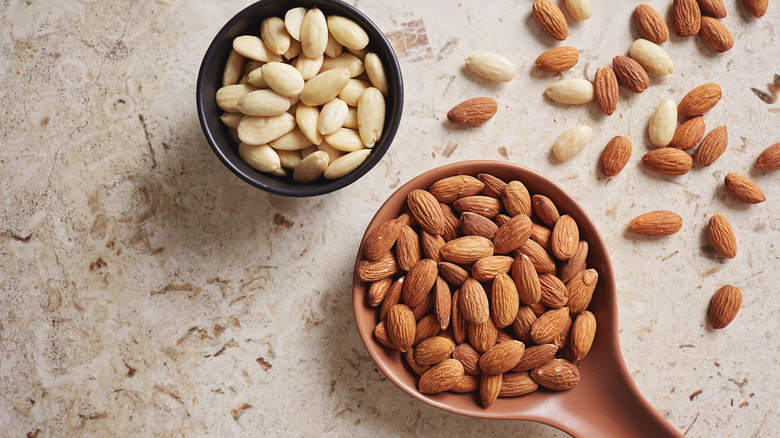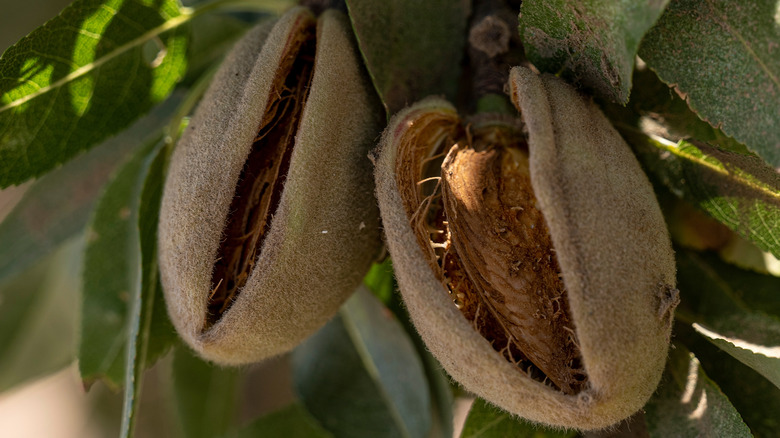Why You'll Never Find Bitter Almonds In A US Grocery Store
Almonds are almonds are almonds ... right? Well, not necessarily, and not knowing the difference may harm you. On most grocery store shelves in the U.S., you can find a type of sweet almond, which is perfectly safe. It's bitter almonds that are dangerous. According to The Spruce Eats, bitter almonds are a variety of sweet almonds that contain hydrocyanic acid, a byproduct of which is an organic version of cyanide. However, despite the cyanide content, bitter almonds are still sold throughout the rest of the world and are even grown in Asia, the Middle East, and even the U.S. — but you can't purchase them for consumption in U.S. grocery stores.
Bitter almonds are most often used in non-food products, such as beauty or skincare products, due to their strong scent. However, you can also find them in sweet food such as fruitcakes, marzipan, and cookies throughout Europe. How is it possible that these nuts are commonplace elsewhere? It's all thanks to the high-heat cooking process that turns the deadly almonds from toxic to tasty. But what if you eat the bitter almonds before they undergo this cooking process?
What happens if you eat bitter almonds?
As The Spruce Eats reports, eating raw, uncooked bitter almonds is a mistake you won't make twice — because you'll likely be dead. Symptoms of cyanide poisoning include breathing difficulties at best, nervous system failure, and sometimes death. As few as seven bitter almonds are enough to kill a child. The average adult may die after eating as few as 12 nuts.
Luckily, bitter almonds and sweet almonds are difficult to mix up. Even though the two nuts are very similar in appearance, the taste will give them away almost immediately. Additionally, you're not likely to find them in the U.S. unless you specifically seek them out. While bitter almond trees are sold as ornamental trees in the states, selling the nuts for consumption or any other use is illegal. However, you can find bitter almonds used in dishes at restaurants around Los Angeles, as the Los Angeles Times notes, where chefs forage the nuts from wild trees. From there, brave diners can sample the bitter almonds in ice cream, panna cotta, cobblers, bread pudding, and other sweets — if they dare.

